This week we will be incorporating the Focus Effect with a strong and invigorating vinyasa practice. Vinyasa translates to “to place (the body) in a special way,” but the poses aren’t stagnant. They intelligently transition and flow to create balance and harmony within the practitioner. The poses are also linked to the breath, and this creates the mind-body connection. Vinyasa is paced faster than all the previous practices, but once you have these 10 steps down, you will feel stronger and more connected to yourself.
I will be breaking down the sun salutation for you today. It is a 10-step movement that can be done as many times as the practitioner wishes. It promotes strength, flexibility, energy, and it can be incorporated into any exercise routine. It has a small learning curve, but once you get it, it can be a very meditative practice. I like to do it anywhere from 5-10 times per session with other poses sprinkled in order to boost my mood and energy for the day.
Things you will need: Focus effect of your choice, a mat and your body! Let’s get started.
- Mountain pose: Stand tall like a mountain. Feel the feet firmly planted, together or hip distance. Think long through the spine and ground down through the shoulders and fingertips as the palms rotate forward to keep the shoulders rotated slightly back for better posture. As you inhale, take both arms up over your head.
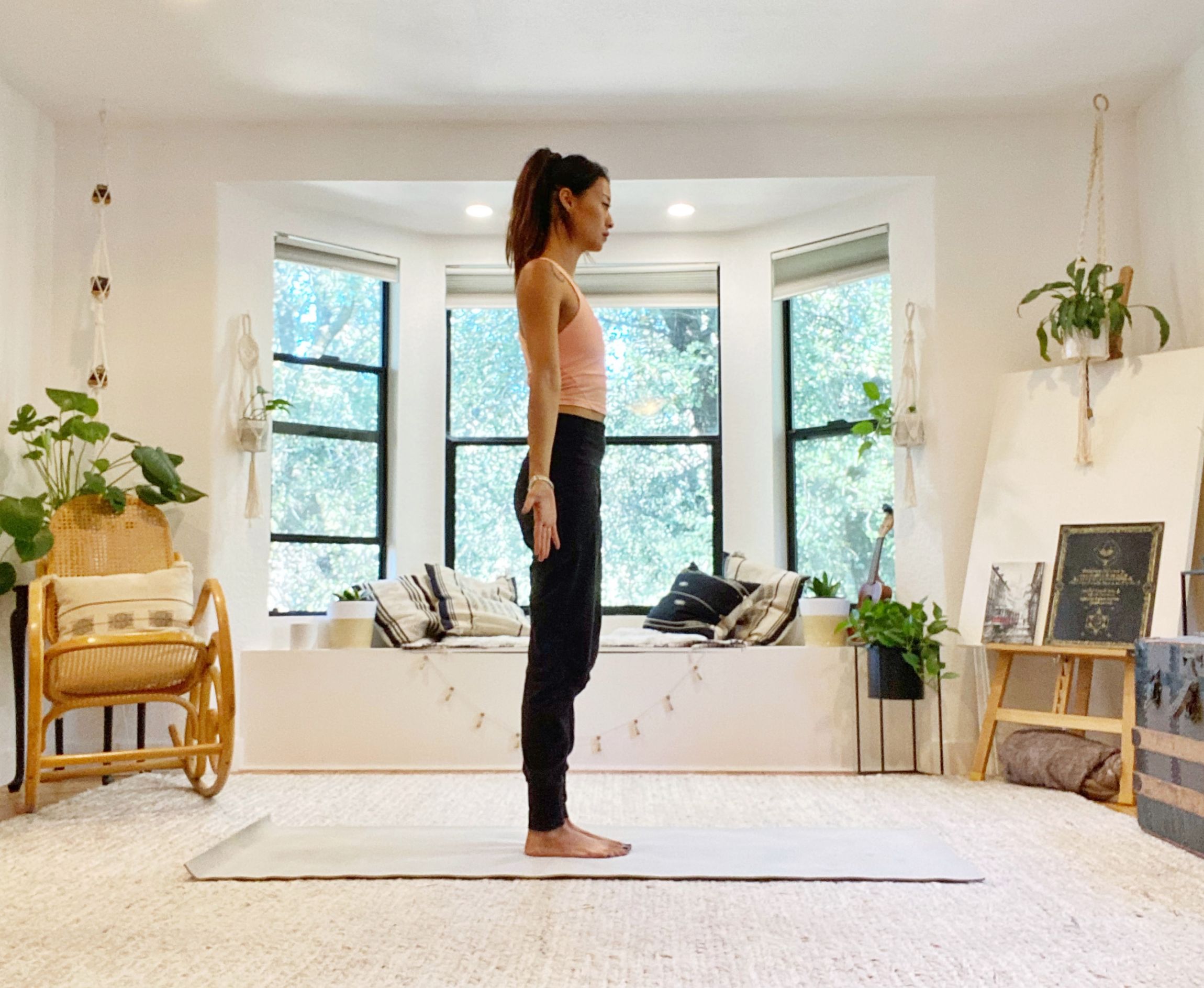
- Forward fold (Uttanasana): As you begin your exhale, begin your standing forward fold. Bend the knees if the hamstrings are tight and keep the belly engaged to support your lower back as you go.
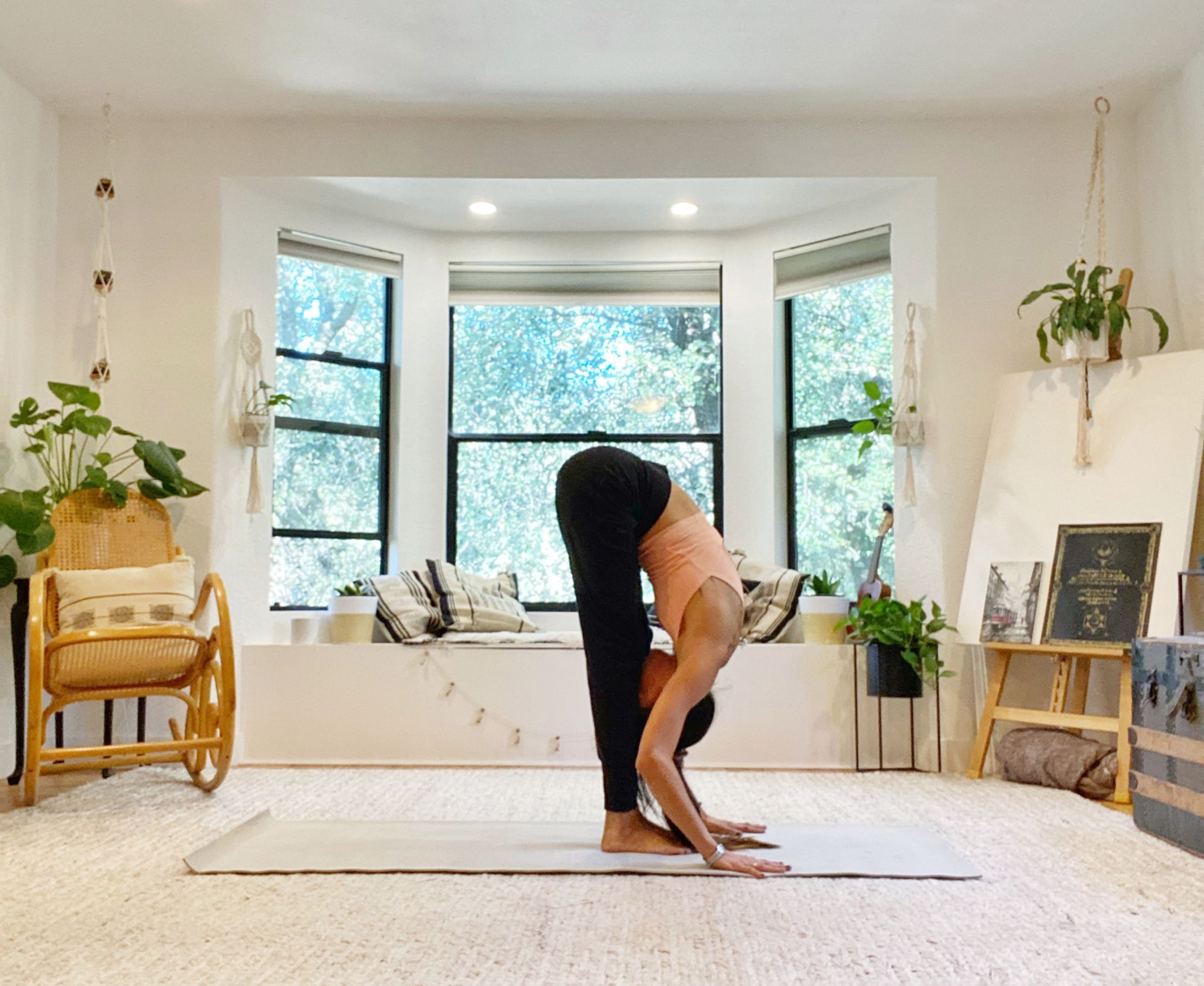
- Halfway lift (Adho Uttanasana): As you begin your next inhale, bring both hands to your shins and flatten out your back as much as possible while lifting the torso. This posture helps to strengthen your lower back and core while lengthening the hamstrings and spine.
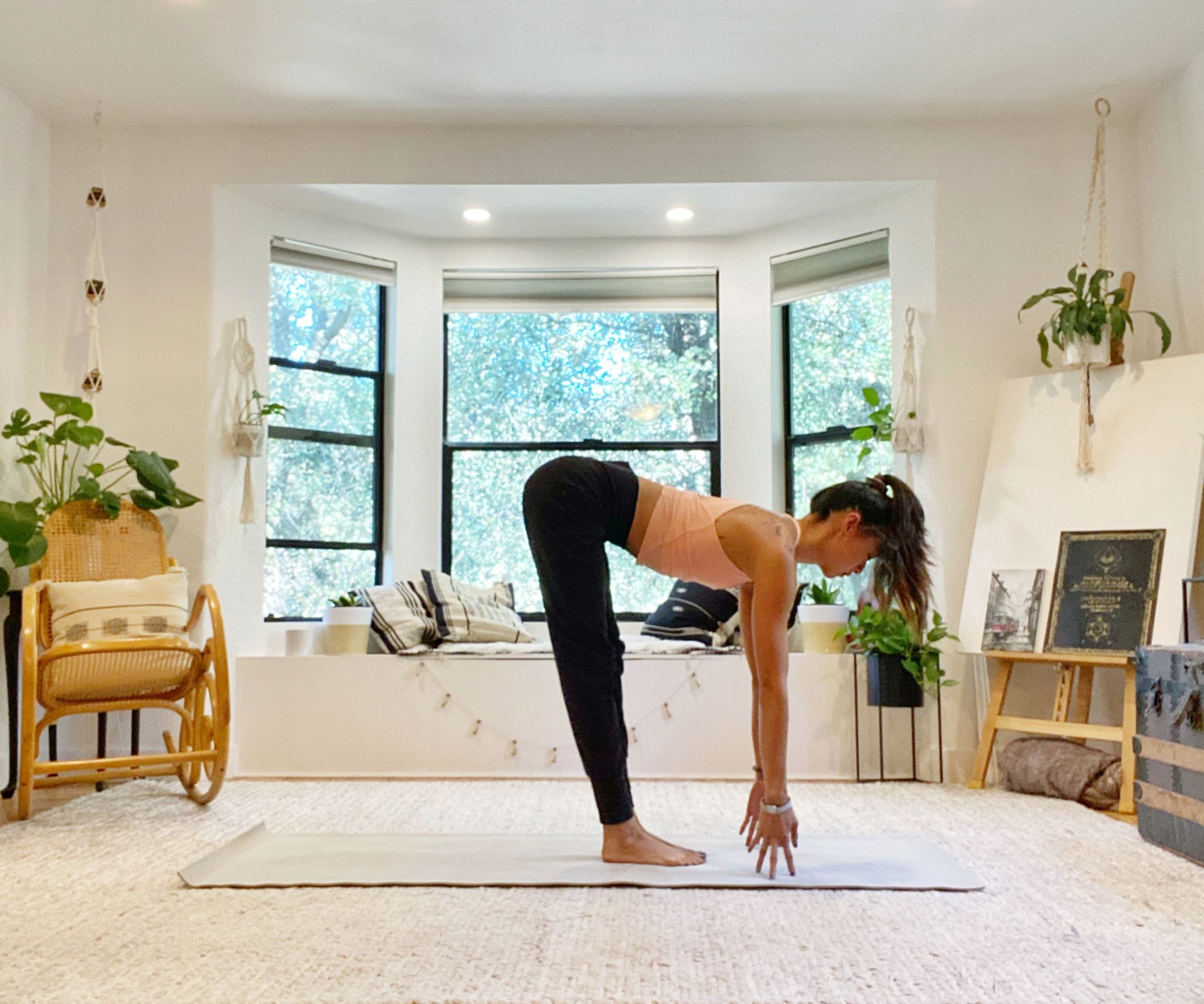
- Forward fold to plank: On your next exhale, forward fold again just like #2, but once your hands reach the ground, walk both feet back into a strong plank position and try to get your head, shoulders, hips, and heels in one straight diagonal line. In the same exhale…
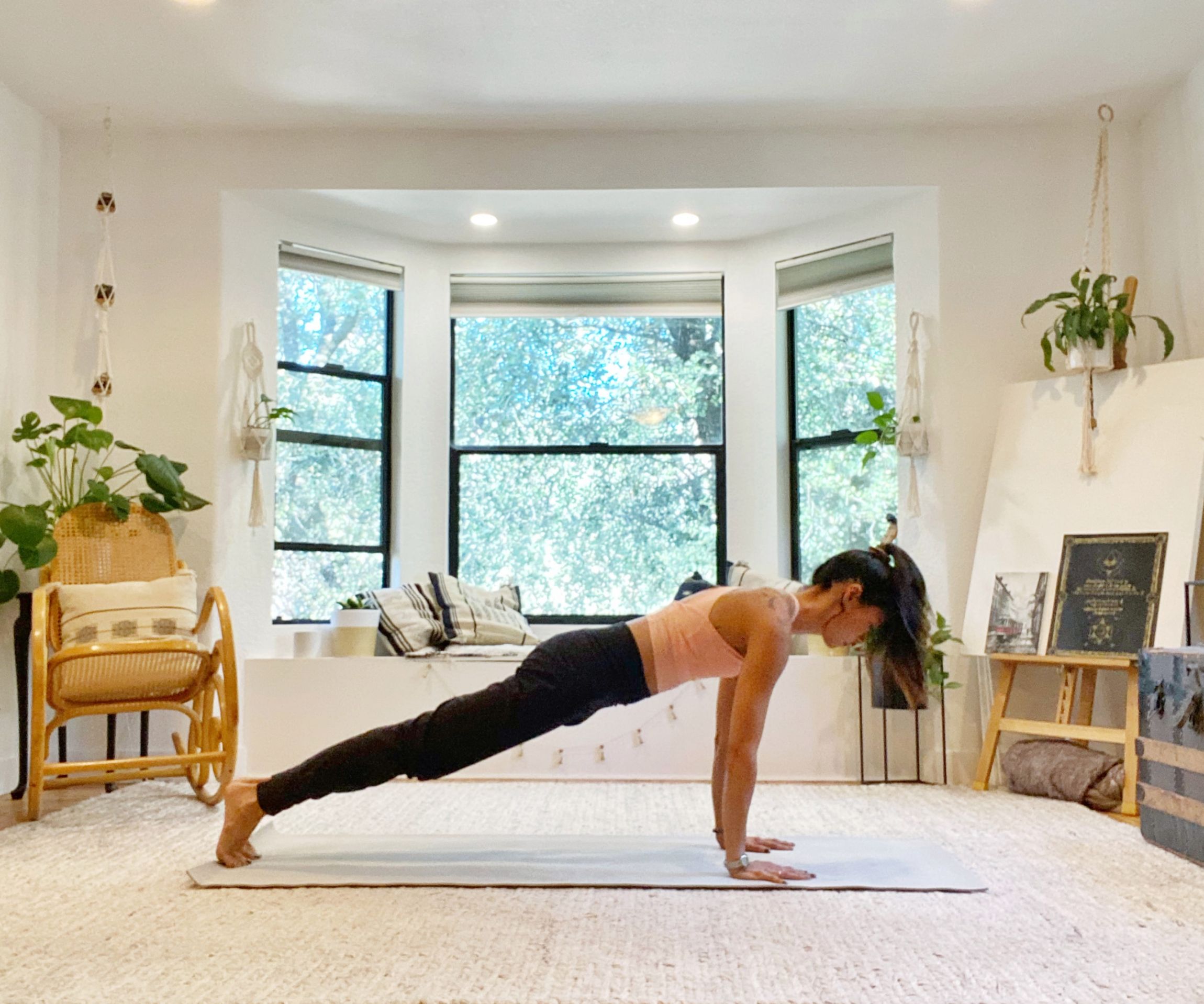
- Tricep pushup (Chaturanga dandasana): lower yourself down halfway and be sure to have your elbows pointing back and keep your chest lifted. **Do your best not to let the shoulders roll forward and down. This can cause injury to the rotator cuff overtime with repetitive motions. Modify this posture to your knees if you do not have the strength to do it safely. You can always work up to the full push up.
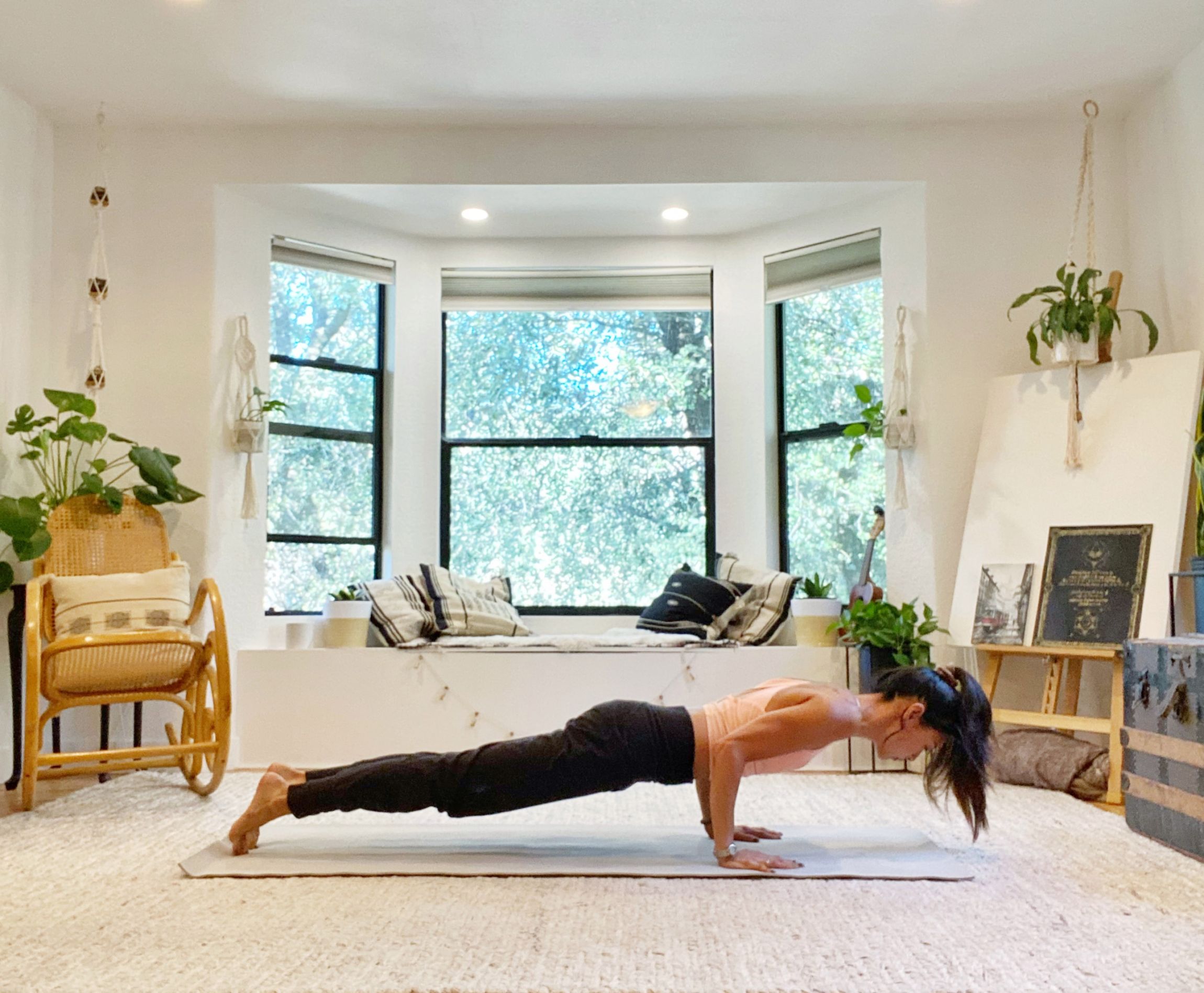
- Upward facing dog (Urdhva mukha svanasana): As you begin your next inhale, press the earth away and straighten the arms while letting the hips drop and the chest lifts. Tighten the legs and keep the knees off the floor if possible. This posture stretches out the front body. **Keep your shoulders down and away from the ears to prevent shoulder pain.
- Downward facing dog (Adho mukha svanasana): As you exhale, engage the core, and send the hips up and back until your body resembles an upside-down V. Push firmly down into the hands and shoulders, tuck your chin towards the chest to lengthen the entire spine and ground the heels of the feet to lengthen the back of the legs. Can be done with bent knees for an easier option.
- Halfway lift: Yes, again... but it begins with an inhale to look towards the hand and then stepping of the feet forward towards the hands. Once your feet make it to the top of the mat you can transition the hands back to the shins.
- Forward fold: Yes again, it’s the only way to make it back to standing! This happens on the exhale.
- Mountain pose: And we are back to where we started. We come up from the forward fold on the inhale as you extend both arms overhead, then exhale to bring the hand to heart center.
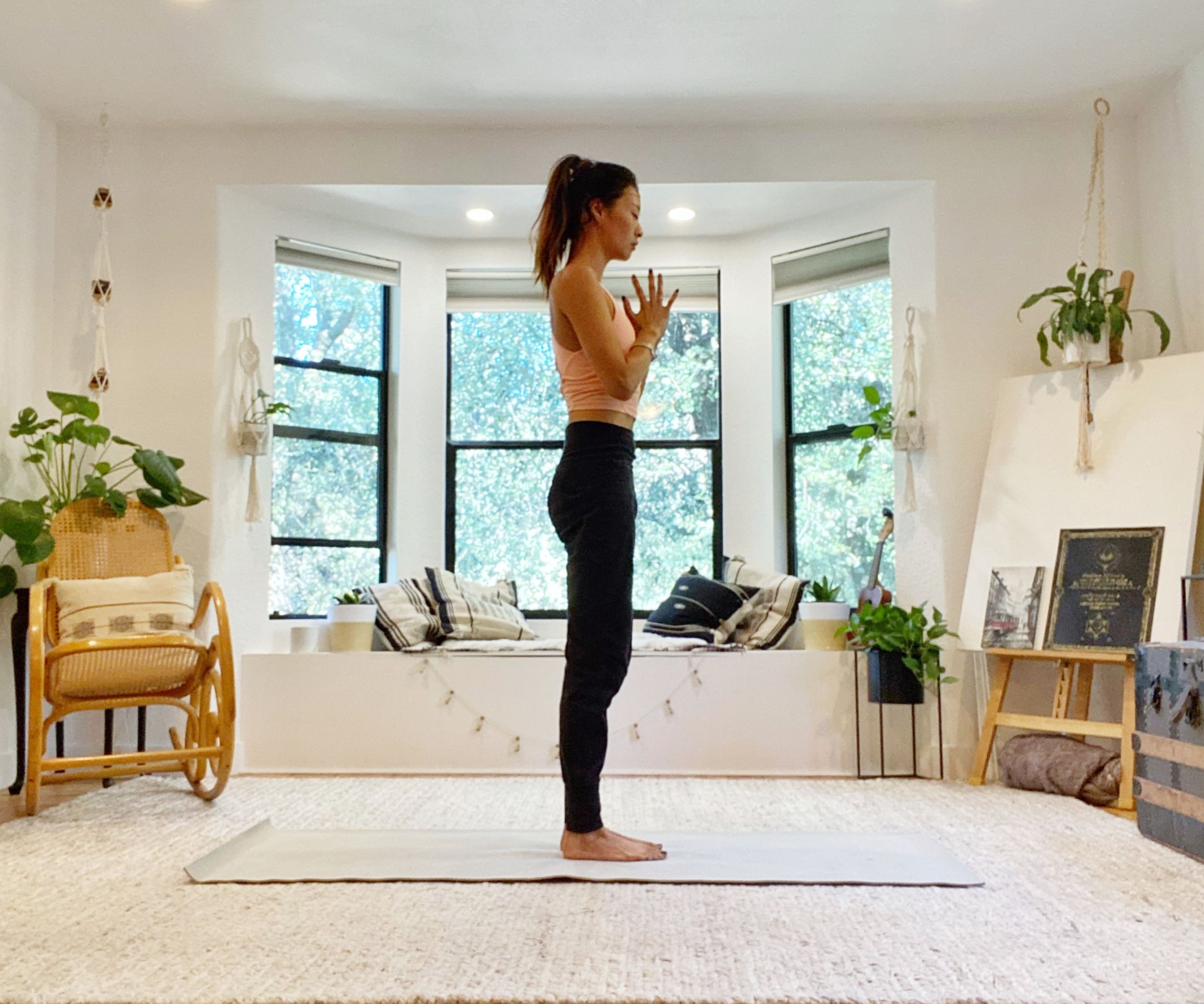
Try this sequence slowly and within your range. Once you find the rhythm, allow the long breaths to guide the movements. Do it as many times as it feels good and be sure to take breaks in between. I hope you enjoyed my series, see you again soon!
Namaste everyone.

